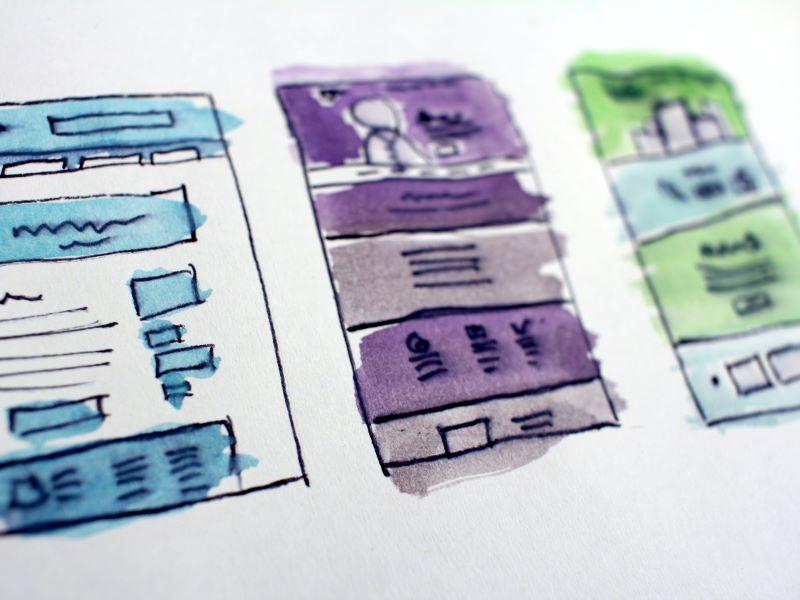
What ‘norms’ support successful learning design collaborations?

Learning design partnerships, in which university course designers work with online programme management companies to develop online and hybrid programmes, are becoming commonplace. But such collaborations need careful management to ensure effective teamwork and quality outcomes.
The University of Pittsburgh School of Health and Rehabilitation Sciences collaborated with the edtech firm Construct Education to assist its design team with new online course developments. After two previously unsuccessful design partnerships, university and edtech team leaders re-envisioned a new model for collaboration. This three-part series documents practical strategies deployed by the Pittsburgh-Construct team to lay foundations for a strong design partnership. In this third part, we focus on four strategies to establish administrative “norms” that help streamline cross-team course development.
Helpful ‘norms’ that streamline teamwork
1. Establish a file-sharing system
At the outset, the Pitt-Construct team agreed on a common file-sharing platform. SharePoint served as the hub for all course development documents because it was the university enterprise solution and familiar to the university faculty. Members of the edtech firm procured access to SharePoint through sponsored accounts, enabling file-sharing across teams.
Files within SharePoint were segmented into administrative and design team access groups, where viewer, editor and commenter permissions were set. The administrative folder hosted project management timelines, meeting agendas and the course review tracker. Design team folders included templates, processes, icons, schedules and branding guidelines. A key document placed in the design team folder was the Quick Start Course Map, a high-level overview of all team members, contacts, course assignments, and links to the learning management system, development files and project management spreadsheet. This guide provided a central access point for anyone working on the project. Furthermore, the handoff from the university to edtech firms for in-progress course developments was facilitated by a Course Summary Guide, which provided links to existing development files, contact information for faculty and previous course developers, as well as the timeline and scope of the project (eg, outstanding interactive learning objects).
Top tips
- Establish early consensus on a user-friendly file-sharing platform accessible to all team members.
- Distinguish roles and the account permission structure for access to file-sharing hub (admin v team-level; editor, viewer, commenter).
- Create a quick-start guide that maps team members to course assignments, contact information and relevant course links.
2. Creating templates
To standardise the course development process within the academic programme, the design team implemented a set of common documents, media and learning management system (LMS) templates. Templates were developed for a course syllabus, schedule and assignments, as well as interactive learning objects (eg, H5P, Rise, Storyline) and navigational text. For the LMS, an icon library was created for major content types and activities, as well as a sample Canvas master course, which included an orientation module. The uniform application of templates by all designers promoted a seamless learner experience and saved time. All updates to templates were vetted by the team leads, documented and disseminated to the design team.
Top tips
- Save all course templates in a mutually accessible location.
- Apply client or university branding standards and style guides to course templates.
- Track and communicate all changes to templates in a timely manner.
3. Compile a document that establishes agreed processes
Team leads collaborated on a document that outlined institutional conventions and processes to be applied across all programmes, as well as partnership agreements related to budget, accessibility and copyright compliance. This living document covered topics such as how to handle account requests, video production, file organisation, graphic requests, tools, term preparation and primary contacts for troubleshooting. It also highlighted the preferred design decision when multiple options were available (eg, file types). Content for the document was developed in real time as learning leads made design decisions impacting all courses. Agreed “norms” were fine-tuned over time as needed. The document supported consistent course design and allowed uniformed messaging to faculty by designers. Further, it served as a useful onboarding tool for new designers and technologists later added to the project.
Top tips
- Document design decisions and processes for standardisation in real time.
- Store norming documents in a centralised location with viewing/commenting permissions for team use.
- Use team lead standing meetings to revisit processes and update norming documents.
4. Sharing tools and licenses
To minimise unnecessary licensing costs and facilitate a unified design team, all members were provided with equal access to common learning technologies, including integration, content authoring, review and communication tools. Initially, the university and edtech firm performed an inventory of licence accounts for all relevant tools, such as Learning Tools Interoperability (LTIs), Articulate, H5P, Canva, Bugherd and Slack, to determine overlap, gaps and available seats for sharing. Ultimately, the university and edtech firms agreed to share account licences for two tools each, adding members from the other team to their own contracts via paid or guest accounts. For exceptions where no seats were available for distribution across the teams, or the acquisition was not justifiable due to institutional limitations or insufficient use, an alternative arrangement was made. This cost-sharing approach allowed all course developments to benefit from a single toolbox.
Top tips
- Create a common inventory of all tool licences available to the university and edtech firms, respectively.
- Mutually agree on number of licences to be shared per tool across university and edtech team members.
- Maintain accurate records of licence usage to reallocate seats as needed.
These four strategies devised by the University of Pittsburgh-Construct team established a consistent approach and set minimum standards for quality online programme development. These mechanisms for establishing useful “norms” can be applied to any context where collaborative processes are lacking or need refinement, ultimately leading to efficiencies for a successful ongoing partnership.
Rae Mancilla is assistant director of online learning at the University of Pittsburgh’s School of Health and Rehabilitation Sciences.
Nadine Hamman is a former learning strategist at Construct and is currently senior project coordinator and learning designer at the University of Cape Town’s Centre for Innovation in Learning and Teaching.
If you found this interesting and want advice and insight from academics and university staff delivered direct to your inbox each week, sign up for the THE Campus newsletter.
Additional Links
To read the first two resources in this three-part series on managing successful learning design partnerships, go to:
Asynchronous communication strategies for successful learning design partnerships
Synchronous communication strategies for a successful learning design partnership


